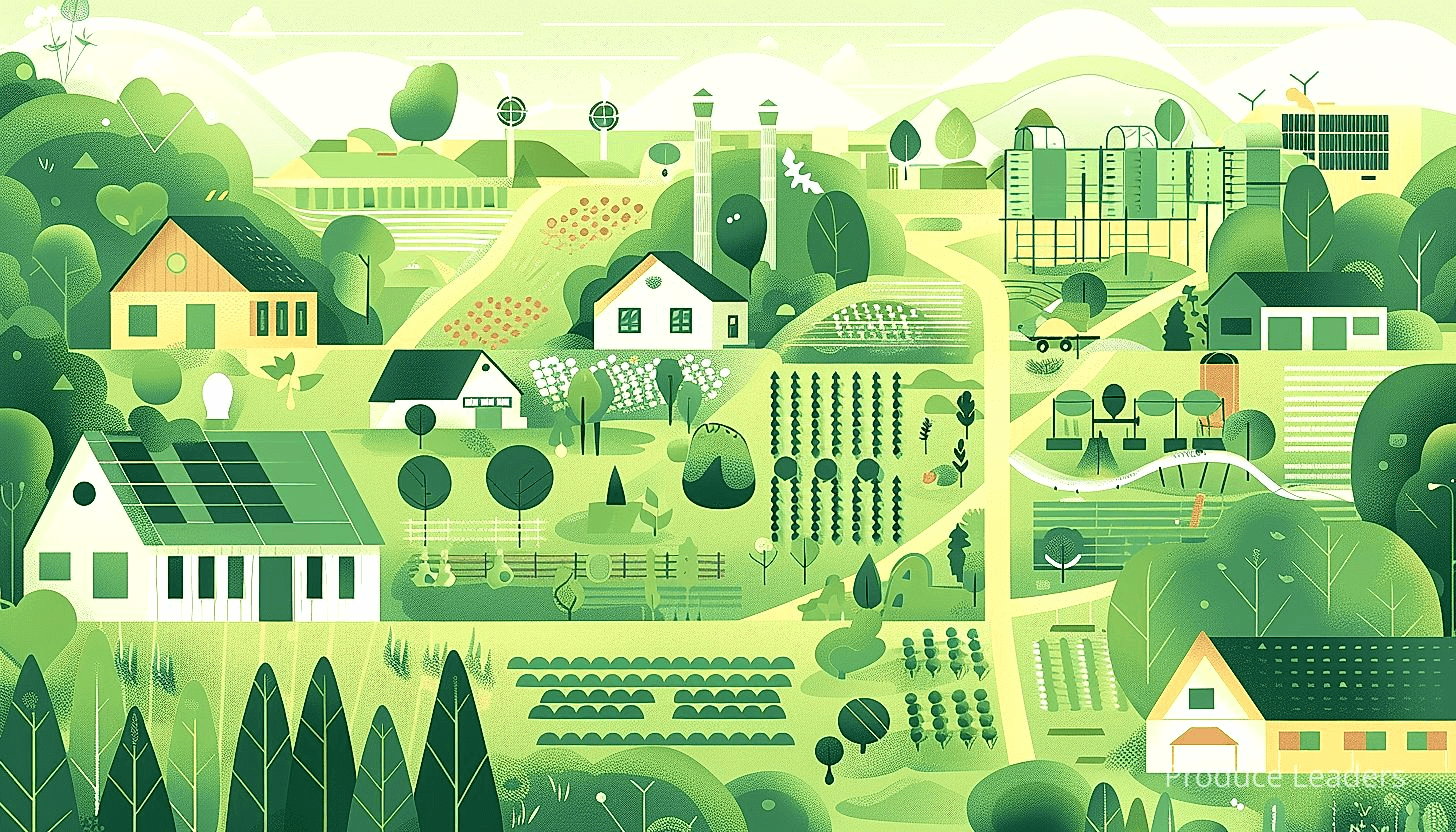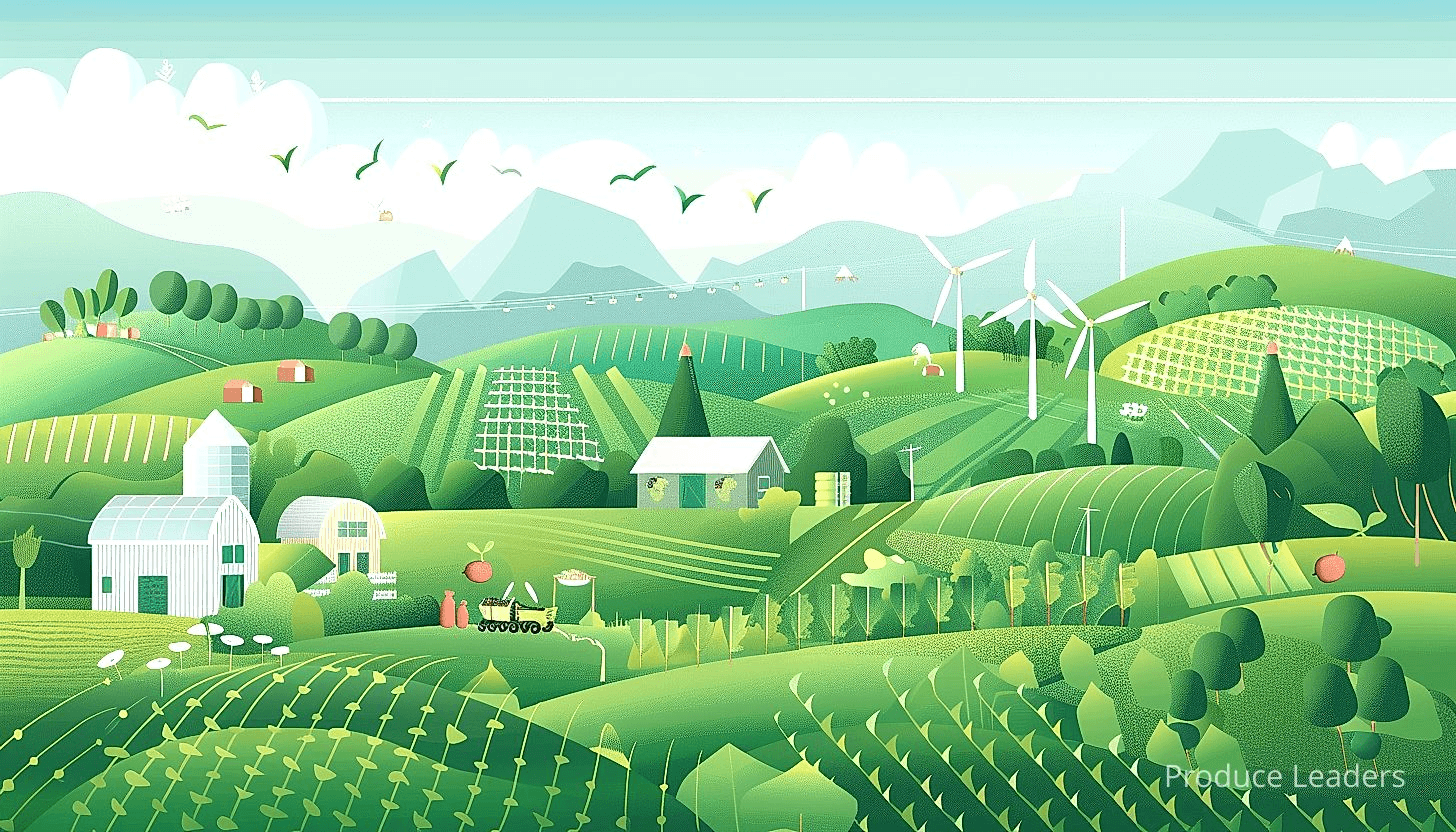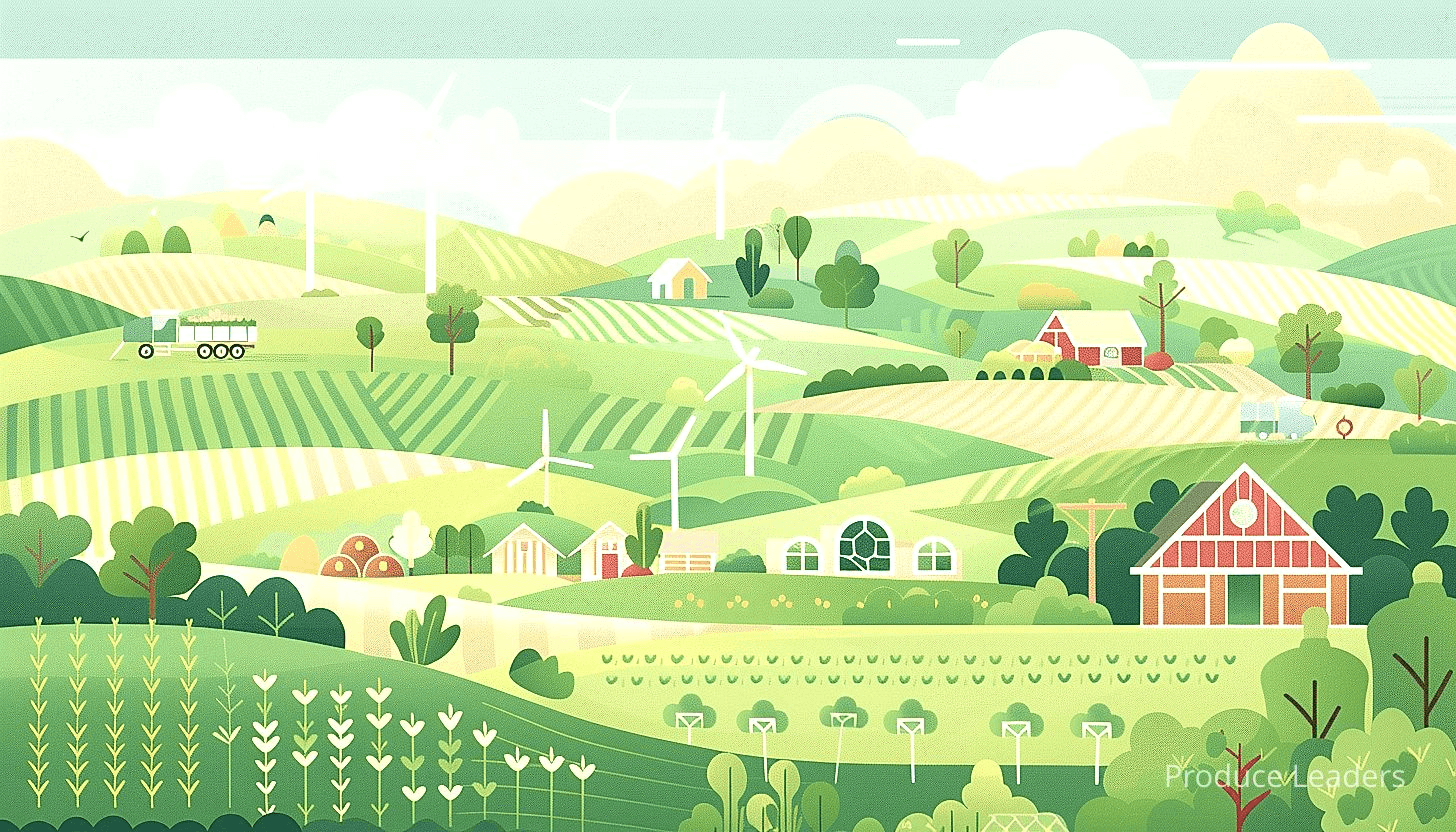Agriculture greatly influences the state of our environment, requiring attention and discourse on adopting more responsible practices.
In recent years, a significant shift has been observed towards pursuing a more sustainable approach in farming.
These progressive steps are largely driven by the introduction and implementation of distinct policies worldwide.
It’s worth examining these mechanisms and identifying the factors that led to their formulation and eventual execution.
This examination not only enables a holistic understanding of the policy environment, but also equips us with insights to further foster environmental sustainability.
As we explore this topic, we will discuss various policies, the principles guiding them, their implications and the evident outcomes.
- Incentives are important for transitions to organic farming.
- Agroforestry and permaculture practices should be promoted.
- Sustainable water management needs implementation.
- Crop rotation and biodiversity should be encouraged.
- Renewable energy investments on farms should be increased.
While the significant role of policy in promoting sustainable farming cannot be overstated, there are numerous facets to this subject left to be explored.
Expanding our discussion, we’ll scrutinize essential components such as soil health and nutrient management, principles of sustainable animal farming, and possibilities of technological innovations in farming.
These elements not only contribute to thriving agroecosystems, but they offer a broader understanding of sustainable farming, revealing its practical potential and how such farming practices can effectively combat environmental challenges.
I invite you to continue with us as we navigate these pivotal aspects, demystifying their relevance in the sustainability discourse and illuminating the way forward to a more sustainable farming future.
Contents
- Policies Promoting Sustainable Farming Practices
- 1. Incentives for Organic Farming Transitions
- 2. Promote Permaculture and Agroforestry Practices
- 3. Implement sustainable water management
- 4. Encourage Crop Rotation and Biodiversity
- 5. Increase investment in renewable energy on farms
- 6. Support farm to market local infrastructure
- 7. Cap and Trade Policy for Farm Emissions
- The Bottom Line
Policies Promoting Sustainable Farming Practices
1. Incentives for Organic Farming Transitions
In Short: Transitioning to organic farming requires substantial changes and investments but can be encouraged through government policies such as financial assistance, tax benefits, or subsidies. The incentives, adaptable to individual farm needs, enhance organic farming’s economic, environmental, and social sustainability.
The transition to organic farming is not an easy task, it demands significant changes in farm management, labor, and financial investment.
Government policies can play a pivotal role in encouraging this transition by providing various incentives.
Such incentives could be financial assistance, offering tax benefits, or subsidies to farmers willing to make the switch.
Organic farming practices can benefit the environment significantly, by reducing the emission of greenhouse gases, and the overuse of water resources, and maintaining soil health.
Therefore, promoting organic farming should be a priority for sustainable agriculture policies.
Let’s talk more about some of the incentives that could facilitate this shift.
Here is the list of some critical incentives that could be offered:
- Tax benefits: offer deductions on the income generated from organic products.
- Subsidies: provide financial assistance to farmers during the transition period which often involves increased costs.
- Training programs: equip farmers with the necessary skills and knowledge for organic farming.
- Market assistance: help in developing market linkages for organic products, giving organic farmers a fair price for their produce.
The tax benefits could significantly reduce the financial burden on farmers and make organic farming an attractive and viable option.
Subsidies could address the temporary increase in expenditures or decrease in yield that farmers often experience during the transition period.
Training programs could fill the knowledge gap for farmers who are new to the principles and practices of organic farming.
And market assistance could ensure that farmers receive fair compensation for their efforts and reinforce the economic viability of organic farming.
While these incentives could catalyze the transition to organic farming, it is also necessary to remember that every farm and farmer is unique.
Therefore, policies should be flexible and adaptable to suit different contexts and conditions.
We need to ensure that support measures address the specific concerns and challenges that each farmer may face in their journey towards organic farming.
The goal is not just to increase the number of organic farms, but to ensure that organic farming is economically, environmentally, and socially sustainable in the long run.
2. Promote Permaculture and Agroforestry Practices
In Short: Promoting permaculture and agroforestry is vital for a sustainable and resilient agricultural ecosystem, offering benefits like improved soil fertility and biodiversity. Successful adoption of these practices requires education, mentorship, financial incentives, and policies designed for accessibility, representing an investment in a healthier future for our planet.
Permaculture and agroforestry are critical practices for a more sustainable and healthy agricultural system.
They can significantly contribute to the preservation and improvement of soil fertility, water management, biodiversity, and overall farm resilience.
This implication suggests how essential it is that these practices are not only understood, but actively promoted in farming communities around the world.

Adopting such practices requires a shift from traditional farming methods, but the long-term benefits are immeasurable.
Permaculture offers a holistic approach to land management, incorporating plants, animals, buildings, and people into a productive and self-sustaining agricultural ecosystem.
Agroforestry, on the other hand, integrates trees into farming landscapes, generating benefits such as shade provision, soil conservation, and enhanced biodiversity.
In particular, there are some specific stages to adopt permaculture and agroforestry practices effectively:
- Education and Training– Farmers need to be well-informed about these approaches, their benefits, and how to implement them.
- Mentorship and Support – This stage involves access to ongoing support and mentoring from experts in the field for the farmers.
- Financial Incentives – Financial support will help farmers transition without the risks of reduced initial yields.
This list indicates an ideal sequential progression of activities aiming to ensure the most effective adoption of these practices by the farming community.
Policies should be put in place to facilitate these stages in a systemic way, to ensure that farmers are both willing and capable of implementing these practices in the long term.
Moreover, promoting permaculture and agroforestry isn’t merely a question of motivation – it’s also a matter of accessibility.
Policies that encourage these practices should be designed to reach out to communities that may have previously been overlooked – from the farmers with smaller operations to those living in less accessible areas.
In this context, partnerships with local educational institutions and organizations can be a powerful tool for reaching out and providing much-needed resources and training.
Moreover, governments must look into offering financial incentives, such as subsidies or grants, to encourage more farms to adopt these sustainable farming practices.
Certainly, promoting permaculture and agroforestry is a colossal task, but it’s also an investment in a healthier, more sustainable future for our farms and for our planet.
Overall, it’s about creating a broader culture shift to ones that view permaculture and agroforestry as essential components of a sustainable agricultural system.
3. Implement sustainable water management
In Short: Sustainable water management in farming ensures preservation of water and contributes to farm sustainability through efficient irrigation, use of drip irrigation, rainwater capture, and wetland maintenance. The government’s role in promoting such practices, alongside farmer participation in local watershed plans, notably increases sustainability, productivity, and profit in the agriculture sector.
Water, undoubtedly, is one of the fundamentals of farming. Sustainable water management is an essential aspect of farming that ensures the preservation of this important resource and contributes to the sustainability of farms at large.
This involves practices that reduce water use, mitigate the impact on watercourses and boost water productivity in agriculture.
Effective water management policies and practices can serve a multitude of purposes on a farm.
Not only do they help in reduction of water waste, but they also aid in preventing soil erosion and enhancing the quality of crops.
The following list provides an array of strategies that farmers can implement for sustainable water management:
- Efficient Irrigation: This involves determining the right amount of water needed by crops. Excessive watering can waste valuable resources and may even cause harm to the crops. As a result, farmers should use precise irrigation methods.
- Use of Drip Irrigation: Drip irrigation systems allow water to drip slowly to the roots of the plant, either onto the soil surface or directly onto the root zone. This, in turn, helps minimize the potential for water loss.
- Capture and Use of Rainwater: Harvesting rainwater and storing it for later use can be an effective water management tool. This water can be utilized for irrigation and watering livestock especially during dry seasons.
- Maintain Wetlands: Wetlands can act as a natural filtering system for runoff water, this reduces sediment and pollutant load that could affect the quality of water in nearby bodies of water such as rivers and lakes.
In this regard, it’s very much required for farmers to adopt the most efficient irrigation practices suitable for their land type and crops. These can be subsurface drip irrigation, sprinkler irrigation, or the traditional surface irrigation, depending on the topography, soil type, and crop needs.
Water quality is another crucial aspect to consider when we talk about sustainable water management. It’s important to monitor that the water sources do not get contaminated with harmful pollutants.
Agricultural run-off carrying fertilizers, pesticides, and sediment can contaminate nearby water sources, thereby threatening the health of aquatic ecosystems and affecting the quality of water that is ultimately used for irrigation. Hence, it’s crucial to employ practices that minimize this runoff and promote water conservation.
One way of achieving this could be the use of buffer strips along the edges of fields. These strips, planted with grasses or other perennial plants, can capture the pollutants and prevent them from seeping into the water bodies.
Moreover, farmers can also participate in local watershed plans that aim to safeguard water quality through collective efforts.
The role of government in enforcing regulations that promote sustainable water management is also crucial. They can provide incentives for the farmers who adapt to sustainable water management and practices.
Pro Tip: Implement sustainable water management practices in farming, like efficient irrigation and runoff reduction, to preserve water resources, enhance crop quality, and increase overall productivity.
By supporting policies and regulations that make sustainable water use easier and more affordable for farms, we are not only helping to conserve a important resource but also supporting the longevity and productivity of the agriculture sector.
Implementing sustainable water management practices is not only a way of operating responsibly and ethically, but it can also lead to increased productivity and profit for farmers. As the global population continues to rise, the demand for food increases, and along with it, the importance of sustainable farming practices will only grow.
4. Encourage Crop Rotation and Biodiversity
In Short: Crop rotation and biodiversity are critical to sustainable farming, as they preserve soil integrity, mitigate nutrient depletion, and disrupt pest life cycles. Incentivizing these practices can transform farms into self-sustaining ecosystems, bolstering resilient and sustainable food systems.
To truly foster the principles of sustainable farming, advocating and implementing the practices of crop rotation and biodiversity should be made a paramount priority.
Crop rotation, at its core, is an essential technique that allows farmers to preserve the integrity of their farmland by planting diverse sets of crops in a sequential manner.
This time-tested strategy mitigates the depletion of important soil nutrients and also phases out the attraction for specific pests, contributing significantly toward the goal of sustainable farming.

The dynamic nature of crop rotation enables the soil to recover natural nutrients and significantly lessens the need for artificial fertilizers.
At the same time, employing crop rotation can lead to increased resilience against pests, as constant crop variation disrupts the life cycle of seasonal pests and weeds.
Biodiversity, on the other hand, is equally instrumental in promoting a balanced and resilient eco-system within the farm area.
It helps in regulating and mitigating climate change, improves soil health, pollination, and water conservation, and contributes positively to the overall agricultural production.
We can highlight some noteworthy benefits of promoting crop rotation and biodiversity, such as:
- Healthy and resilient soil: An ongoing sequence of different crops prevents the exhaustion of specific soil nutrients, improving the overall growth and yield of crops.
- Pest control: Frequently changing the types of crops grown confuses pests, inhibiting their life cycles, and reducing their populations.
- Increased biodiversity: Diversifying agriculture habitats attracts a diverse range of wildlife, which can contribute to natural pest control and pollination.
Consequently, it is crucial for the agriculture industry and policymakers to incentivize these practices and educate farmers about the long-term benefits associated with biodiversity and crop rotation.
Supporting our growers in integrating these sustainable practices into their farming routines can also have a positive knock-on effect on the wider ecology, contributing towards sustainable development goals (SDGs).
Organizations and governments should also consider funding research initiatives to further explore the productive value and innovative adaptations of these farming practices which directly contribute towards the sustainable agriculture.
By doing this, we can foster an environment for farms to grow and evolve into self-sustaining ecosystems, which are not only productive but are also in harmony with nature.
Therefore, actively encouraging crop rotation and biodiversity should be a staple component of our initiatives aimed at promoting resilient and sustainable food systems.
5. Increase investment in renewable energy on farms
In Short: Investing in renewable energy sources such as solar, wind, and biomass on farms can significantly reduce dependence on fossil fuels and help combat climate change. Governments, private sectors, and agricultural institutions must collaborate to create finance models and supportive policies to offset initial installation costs, provide training for farmers, and potentially open new revenue streams for them.
For decades, the agriculture sector has predominantly been reliant on fossil fuels for powering farm operations. However, a transformative shift towards renewable energy sources—such as solar, wind, and biomass—on farms can prove to be a game-changer in promoting sustainable farming practices.
Farmers worldwide have started recognizing the economic and environmental benefits of renewable energy. It is not only helping them reduce their dependence on fossil fuels but also their carbon footprint, which is pivotal in combating climate change.
Increasing investments in renewable energy on farms can spur this transition. It would require creating financial incentive programs aiming to offset the initial costs of installing renewable energy infrastructure.
Government, private sector, and institutions involved in agricultural development need to collaborate. They should develop efficient financing models that offer low-interest loans, grants, or tax incentives to farmers willing to make the transition.
Below is a list that describes some of the renewable energy technologies that can be adopted on farms:
- Solar energy: The use of solar panels to generate electricity that can power farming operations, including irrigation systems and machine operations.
- Wind energy: The installation of wind turbines can produce electricity, mainly in areas with significant wind resources.
- Geothermal energy: Using the Earth’s internal heat to warm greenhouses or other agricultural facilities.
- Biomass energy: This involves harnessing energy from plant and animal material. It can be particularly effective on farms that have access to waste crops or animal manure.
It’s also crucial to consider the local context and the types of farms when promoting renewable energy. Smallholder farms might benefit more from micro- or off-grid solutions, whereas larger commercial farms might be able to invest in larger scale installations.
Alongside financial incentives, we also need strong policy frameworks that facilitate the integration of renewable energy technologies into farming operations. This could involve simplifying the regulations for installing renewable energy infrastructure and providing technical support to farmers during the transition.
Training and capacity building programs should be provided to the farmers. It’s essential to ensure they are equipped with the knowledge and skills to operate and maintain the equipment.
Moreover, increasing the share of renewable energy in agriculture can also create new income streams for farmers. For instance, farmers can sell the excess energy produced back to the grid, providing them with additional income.
Overall, promoting renewable energy on farms is not just about reducing greenhouse gas emissions—although that’s a significant benefit. It also helps ensure energy security for farmers, decrease energy costs, and potentially open up new revenue streams.
Achieving a renewable energy transition on farms would mean overcoming a multitude of challenges, from initial investment costs to the lack of technical know-how among farmers. However, with sustainable investment strategies, supportive policies, and robust capacity building measures, we can make it a reality.
6. Support farm to market local infrastructure
In Short: Farm-to-market local infrastructure is vital for the sustainability of agriculture, bolstering local economies by helping farmers sell their products and focus on producing quality, sustainable crops. Improved transportation, adequate storage facilities, supportive local marketplaces and fair regulations are key strategies to enhance this infrastructure, paired with necessary training for farmers to properly utilize these advancements.
Ensuring the sustainability of agriculture does not end at the farm gate. To truly create a sustainable and resilient food system, we must also dig in into the realm of farm-to-market local infrastructure.
Local infrastructure is critical in supporting farmers – particularly smallholder and family-run farms – to get their produce from their fields to local markets.
These infrastructures encompass a wide variety of components including transportation, storage facilities, local marketplaces, and even regulations and policies that facilitate or hinder the smooth flow of agricultural products.

Supportive policies for such infrastructures could significantly enhance the ability of farmers to sell their products, improve their income, and essentially bolster the entire local economy.
When there is a well-functioning local infrastructure in place, farmers can focus their efforts on producing quality and sustainable crops without having to worry about the post-harvest challenges.
Nevertheless, many local farming communities still face numerous barriers due to fragmented and underdeveloped infrastructures.
Let me tell you, it is worth considering some concrete strategies we could incorporate into policies to strengthen local farming infrastructures. Here are a few examples:
- Investing in better transportation infrastructure: This could mean building better rural roads or improving other transportation methods to make it easier for farmers to bring their products to market.
- Development of storage facilities: Proper storage can reduce post-harvest losses and give farmers more flexibility in when they sell their crops, potentially allowing them to get better prices.
- Supporting local marketplaces: Policies can promote and provide incentives for the establishment of local farmers’ markets, which can also serve to connect farmers directly with consumers and foster community relationships.
- Implementing fair regulation and policies: Regulating marketing contracts, setting minimum pricing standards, and enforcing timely payments can create a more secure and beneficial environment for farmers.
Apart from the actual infrastructure, it’s also crucial to consider the capacity of farmers to use and benefit from these infrastructures.
Therefore, it would be beneficial to couple the infrastructure development with training programs and resources to help farmers understand how to best utilize these facilities and navigate their way in the market.
Supporting the local farm to market infrastructure thus portrays a synergistic approach – it not only helps to ensure food security but also contributes significantly to the rural economy and enhances community wellbeing.
Important: Supporting farm-to-market local infrastructure, which encompasses transportation, storage facilities, local marketplaces and regulations, is pivotal for a more sustainable and resilient food system as it enhances farmers’ abilities to sell their produce, thereby bolstering local economies.
The shift towards a more sustainable and resilient food system demands us to work beyond just the technological changes on the farm, but also involves creating an enabling environment where these productions can thrive and reach their consumers efficiently.
By doing so, policies supporting farm-to-market local infrastructure would serve as a catalyst for multi-faceted and long-lasting positive changes in our agricultural systems and rural communities.
7. Cap and Trade Policy for Farm Emissions
In Short: The Cap and Trade policy incentivizes farmers to curtail their greenhouse gas emissions via market competition, stimulating efficient and sustainable farming practices. Despite its implementation challenges, with appropriate technological use and supplementary policies, it can significantly contribute to making our food systems sustainable while tackling climate change.
The Cap and Trade policy is an effective approach to curb farm emissions within the context of achieving sustainable farming practices.
This policy gives farmers a green incentive to reduce their greenhouse gas emissions and introduces a degree of market competition to drive down overall emissions sustainably.
Unlike direct regulation, such a market-based approach can offer better flexibility and efficiency, making it a worthy tool under the policy toolkit for sustainable farming practices.
Now, let’s take a look into how the Cap and Trade system works:
- Setting the Cap: Regulators set a limit or “cap” on the total amount of greenhouse gases that can be emitted.
- Allocation of Emission Permits: Every farmer is then given emission permits which symbolizes the right to emit a certain amount.
- The Trade: Farmers who are efficient and emit less than their cap can trade or sell their excess permits to others who find it more difficult to reduce emissions.
As a dynamic framework, the Cap and Trade policy encourages farmers to find innovative solutions to reduce their emissions, thereby contributing to an overall more sustainable agricultural sector.
Practically implementing this, however, can involve numerous challenges such as establishing an efficient monitoring system and resolving potential issues on how the emission caps are initially allocated.
Addressing these challenges, nevertheless, is crucial to optimizing the design and potential impact of such a policy in favor of sustainable farming.
Moreover, among various potential strategic responses by farmers to the Cap and Trade policy, one involves shifting to more sustainable farming practices that require fewer emissions to begin with.
Appropriate use of technology, for instance, can significantly improve a farm’s operational efficiency, reducing the need for emission-intensive practices.
Further, the Cap and Trade policy could indeed be more effective when complemented alongside other policies.
This includes financial support for access to sustainable farming equipment, educational programs to train farmers about more eco-friendly farming methods, and policies to promote the use of renewable energy on farms.”
With the right foundation and support, a Cap and Trade policy can be a promising policy tool towards mainstreaming sustainable farming practices while addressing the pressing issue of climate change.
Adopting a multi-faceted approach towards promoting sustainable farming practices certainly involves challenges, but it’s a necessary effort if we want our food systems to be sustainable for future generations.
The Bottom Line
Sustainable farming practices are of critical importance to the survival of our planet.
The implementation of these practices can benefit both the present and future generation by creating a self-reliant and healthier society.
By embracing policies that promote sustainable farming practices, we can overcome food security challenges while simultaneously addressing environmental concerns.
It is evident that everyone, from farmers to consumers to lawmakers, has a role to play in achieving agricultural sustainability.
Through coordinated effort and steadfast commitment to these policies, we can usher in a new era of agricultural practices that not only meets our food needs but also safeguards our planet.




















